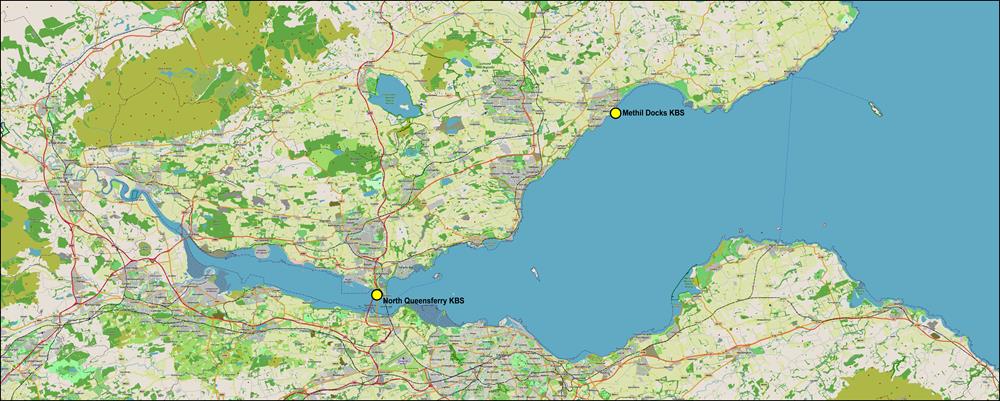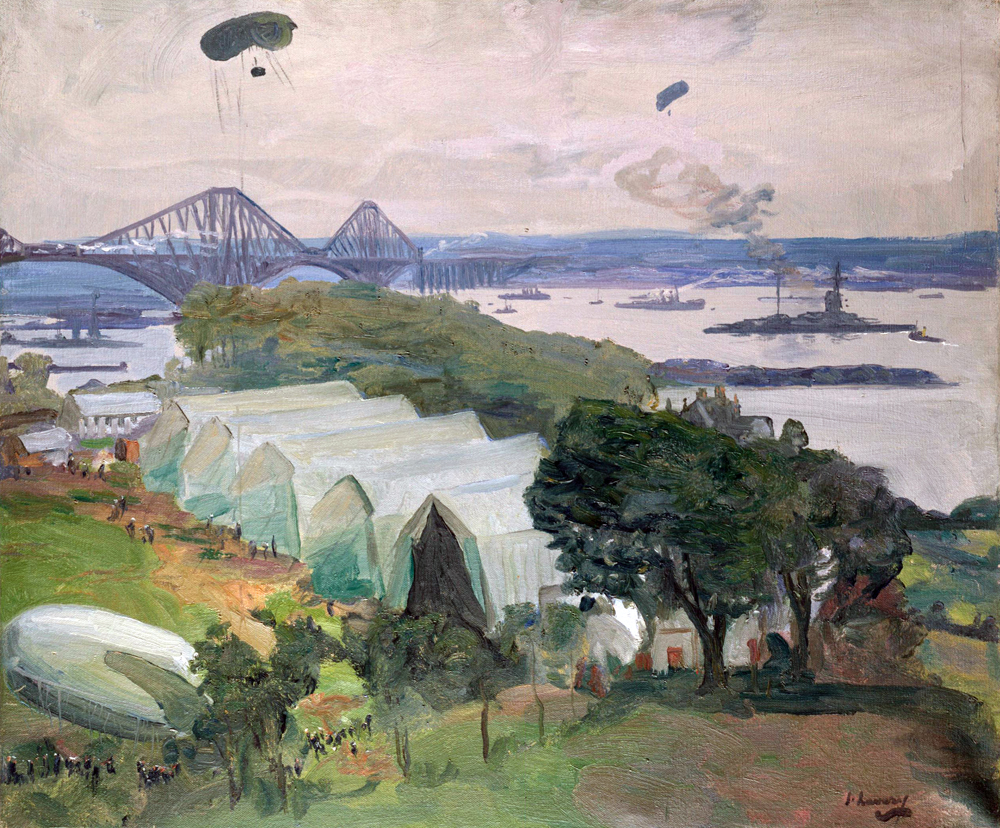Naval Kite Balloon Stations
< Back to WWI – Military Aviation around the Forth
 Kite Balloon Stations around the Forth
Kite Balloon Stations around the Forth
A kite balloon was cigar shaped, with fins at the rear. It was filled with hydrogen to give it lift, and attached to a warship by a tether cable and harness which kept its nose up, so that it acted like a kite in the slipstream behind a ship.
Observers were carried in a basket slung below the balloon, and communicated to the ship by telephone. In the days before radar, they greatly improved the range of vision of warships.
Kite balloons were maintained in shore stations. Inflated balloons were transferred to warships where they were secured, ready to be winched aloft once the ship was at sea.
After the Battle of Jutland [June 1916] . . .
. . .Vice-Admiral Beatty, in his report of the proceedings of the Battle Cruiser Fleet, stated — “I would submit that the balloon should be flown from a ship in the advanced cruiser screen in order to increase the range of vision ahead of the Fleet. Had the kite balloon been well forward during the operations, I am of opinion that the enemy might possibly have been sighted.”
. . .in view of the proved value of kite balloons towed from ships, Admiral Jellicoe had asked, early in June [1916], for eleven balloons, one for each battle squadron and battle cruiser flagship, and two for use in the light cruiser squadrons. On the 30th of September [1916] he increased his demands to twelve balloons of the latest ‘M’ type, [of Caquot balloon] complete with spares.
The proposal received Admiralty approval on the 13th of October, and shore bases to house the balloons and to supply them ready-inflated to the ships as required, were begun at Scapa and Ferry Barns North Queensferry. The stations were completed early in 1917.
The balloon hangers and other buildings at Ferry Barns were put up for sale on April 15th 1920
 Sir John Lavery’s painting of the Kite Balloon station at Ferry Barns in North Queensferry.
Sir John Lavery’s painting of the Kite Balloon station at Ferry Barns in North Queensferry.
There was another Kite Balloon Station in Methil Docks, but there are no records of its exact location or dates of service.